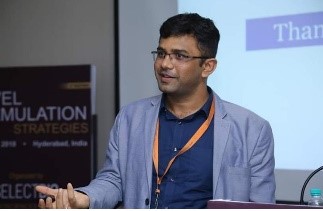Keynote Forum
Juergen Lademann
Director Center of Experimental and Applied Cutaneous Physiology, Germany
Keynote: Topical drug delivery with nanoparticles: Science fiction or reality?
Time : 09:15 - 09:55

Biography:
Jurgen Lademann graduated from the Moscow Lomonosov State University in 1980. 1991 he received the Assistant Professorship from the University of Jena, Germany. From 1993 to 1995 he headed the Medical Center of Sensor Technology at the University of the Armed Forces Germany. In 1996 Jurgen Lademann joined the Charite Universitatsmedizin Berlin and was appointed Director of the Center of Experimental and Applied Cutaneous Physiology. In 2001 the Charite appointed him full professor of Dermatology. He is the Vice President of the IFSCC and the editor of the Journal Skin Pharmacology and Physiology. He authored more than 600 peer-reviewed articles.
Abstract:
The demands on nanoparticles for use in dermatology and cosmetics are very different. While nanoparticles widely applied in sunscreens, like TiO2 and ZnO, shall remain on the skin surface or in the upper cell layers of the stratum corneum, nanoparticles intended for drug delivery shall penetrate through the skin barrier to the target structures in the living cells.
At the Charité - Universitätsmedizin Berlin various laser scanning microscopy methods are used to investigate the penetration and storage of nanoparticles in the skin, hair follicles being in the focus of attention. Human hair follicles are ideal target structures for drug delivery. Hosting both the stem and dendritic cells, they are surrounded by a dense network of blood vessels. Investigating nanoparticles of different size and materials, it was found that particles of approximately 600nm diameter penetrate most efficiently into the hair follicles and can be stored there for ca. 10 days. Their retention time in the hair follicles exceeds that in the stratum corneum by almost one order of magnitude











